Like every year, Nikon and Olympus each organizes a contest where microscopic photos from the world of biology are judged and selected. We’ve decided to show you the top ten winning entries from the Olympus BioScapes Digital Imaging Competition, which were selected from a whooping 2,000 photos from 62 countries.
First prize goes to Ralph Grimm, a 45-year-old high-school teacher from Australia, who through his masterful work proved that there’s beauty to be found in anything, even in a ball of slime. Grimm decided to try out his microscope on a slimeball lying around turning the magnification to 200x. He soon experienced a tiny world filled with amazement and, of course, rotifers – tiny animals that live primarily in fresh water and gobble up gunk. Interestingly enough last year a microphoto that featured a rotifer that looked like Mickey Mouse also won first prize. Seems like slime is destined for greatness, however this year with Grimm’s entry the rotifer went live motion, since the winning entry is actually a video, not a photo – the very first video to win the Olympus digital imaging competition. For his efforts Grimm was awarded $5,000 worth of Olympus camera and microscope equipment, plus an expense-paid trip to San Francisco.

Second place goes to Arlene Wechezak who photographed a red algae Scagelia, showing reproductive tetraspores and golden diatoms. She was awarded $2,500.
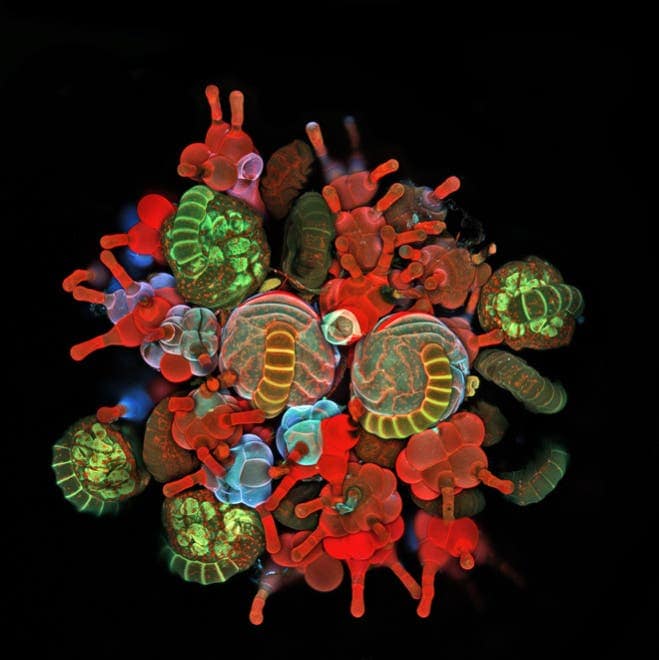
Igor Siwanowicz won the $1,500 third prize with his stunning ultra-close-up view of a fern, in which delicate features like a cluster of spore-filled sporangia and specialized protective hairs called paraphyses can be clearly and beautifully seen. Siwanowics also scored three other honorable mentions for his beautiful portraits of a feathery amphipod appendage, a moth’s curled-up proboscis and an oak lace bug.

Fourth place goes to a stunning microphoto depicting the muscles and rows of pigment cells (melanocytes) visible in this view of the claw of the crustacean Phronima sp. by Christian Sardet (Villefranche sur mer, France) and Sharif Mirshak (Montreal) of the Plankton Chronicles Project.
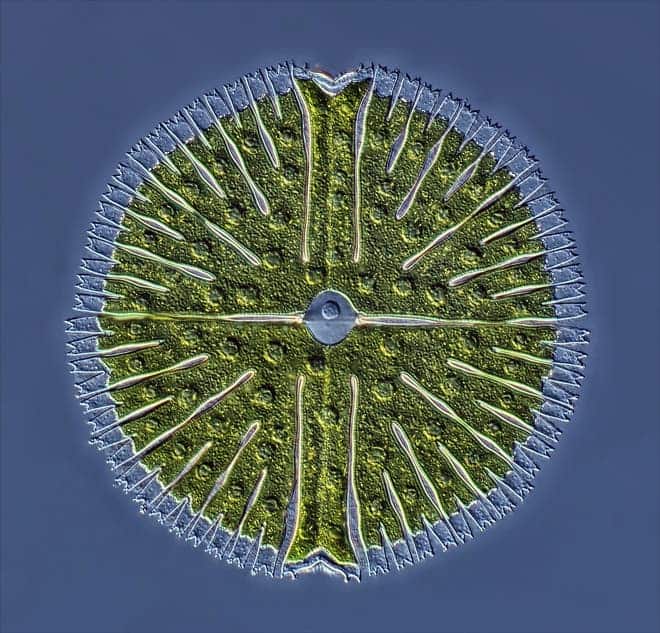
Fifth place goes to Rogelio Moreno Gill from Panama for this stunning photo of the unicellular green alga Micrasterias which seems to resemble a mandala. The effect was made possible by stacking 22 images that were captured using differential interference contrast.
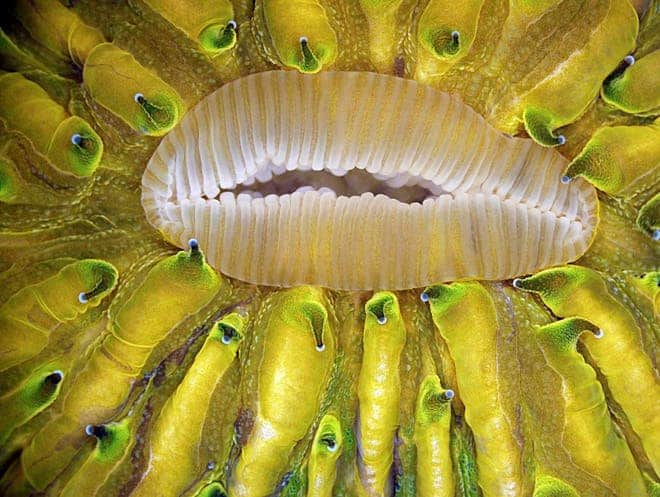
This amazing photo catches a live mushroom coral during its mouth expansion. The iridescent green color is due to auto-fluorescence, caused by tungsten illumination used to capture the image. The photographer, James Nicholson of the NOAA/NOS/NCCOS Center for Coastal Environmental Health and Biomolecular Research at the Fort Johnson Marine Lab, in Charleston, S.C., came at sixth place.
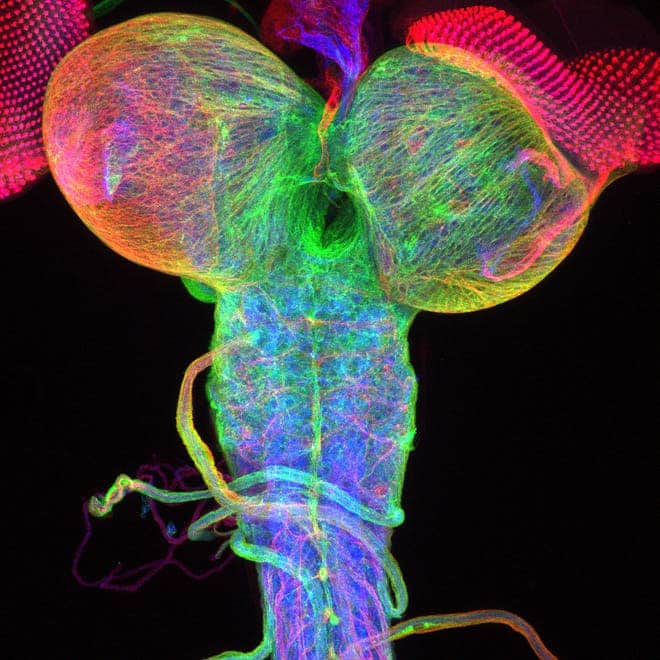
This really weird looking thing is actually a beta-tubulin expression of a fruit fly’s third instar larval brain, with attached eye imaginal discs. The photo was taken using confocal microscopy by Christian Klämbt and Imke Schmidt of the University of Münster in Germany, won seventh prize in the Olympus BioScapes competition.
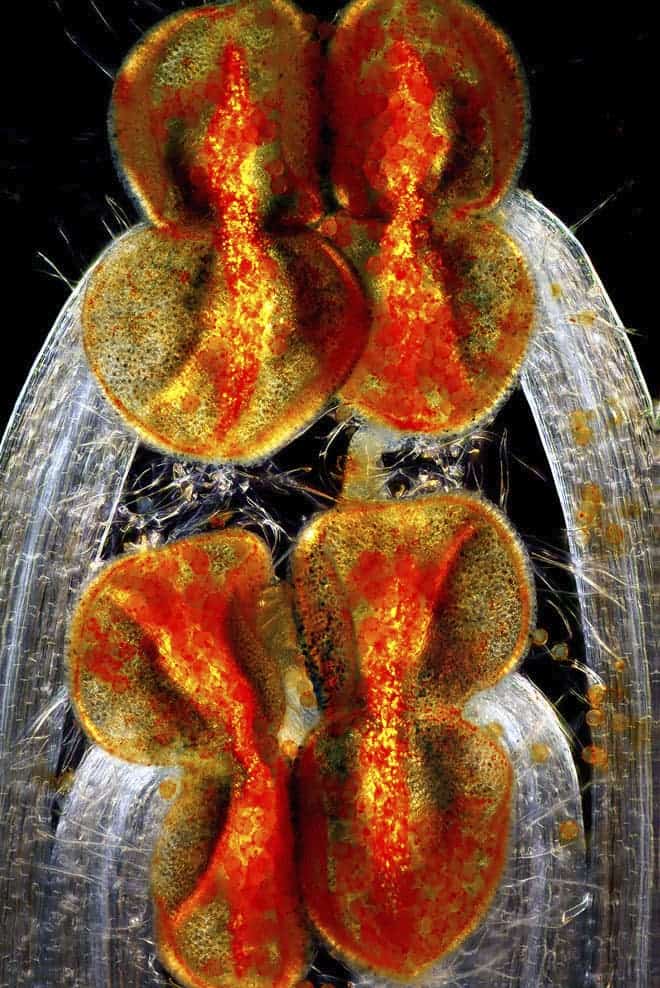
This is an ultra-zoom of a typical annual plant or weed called henbit (Lamium amplexicaule). In this 100x image taken by Edwin Lee of Carrollton, Texas, the stamens, anthers and filaments of the henbit can be seen. This won eight prize.

This isn’t a flower, but a microphoto of a delphinium seed acquired from multiple Z-stacked images using epi-fluorescence. The photographer Sahar Khodaverdi of the University of Tabriz in Iran won ninth prize.
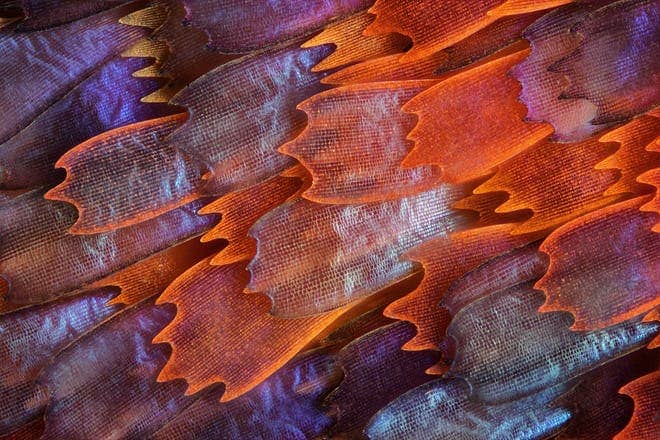
This is my personal favorite, although it’s only been ranked on number 10 by the Olympus contest organizers. This image taken by Charles Krebs of Issaquah, Wash., shows butterfly wing scales at 200x magnification using a technique called diffused reflected illumination


